Peter Bloem
Truth-value judgment in language models: belief directions are context sensitive
Apr 29, 2024



Abstract:Recent work has demonstrated that the latent spaces of large language models (LLMs) contain directions predictive of the truth of sentences. Multiple methods recover such directions and build probes that are described as getting at a model's "knowledge" or "beliefs". We investigate this phenomenon, looking closely at the impact of context on the probes. Our experiments establish where in the LLM the probe's predictions can be described as being conditional on the preceding (related) sentences. Specifically, we quantify the responsiveness of the probes to the presence of (negated) supporting and contradicting sentences, and score the probes on their consistency. We also perform a causal intervention experiment, investigating whether moving the representation of a premise along these belief directions influences the position of the hypothesis along that same direction. We find that the probes we test are generally context sensitive, but that contexts which should not affect the truth often still impact the probe outputs. Our experiments show that the type of errors depend on the layer, the (type of) model, and the kind of data. Finally, our results suggest that belief directions are (one of the) causal mediators in the inference process that incorporates in-context information.
Reasoning about Ambiguous Definite Descriptions
Oct 23, 2023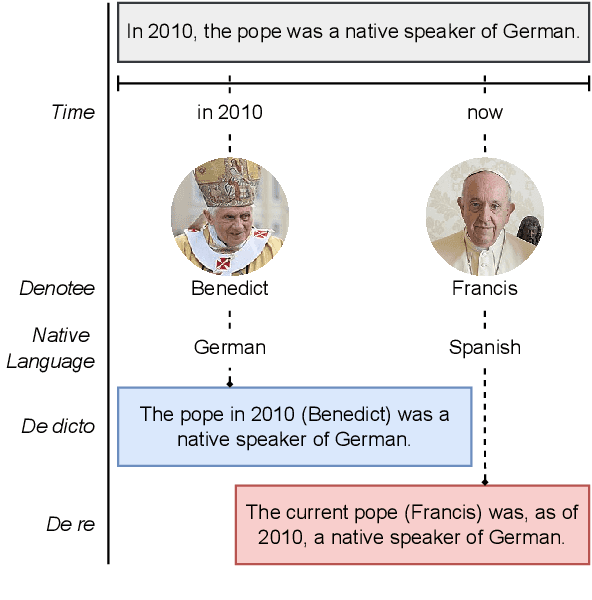
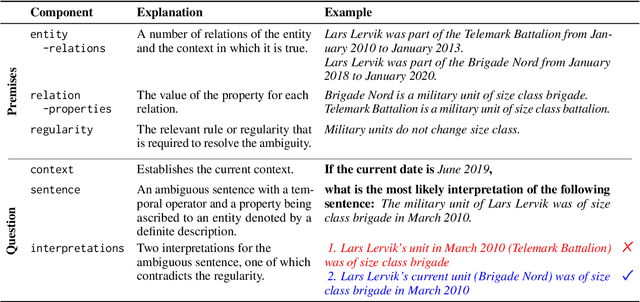

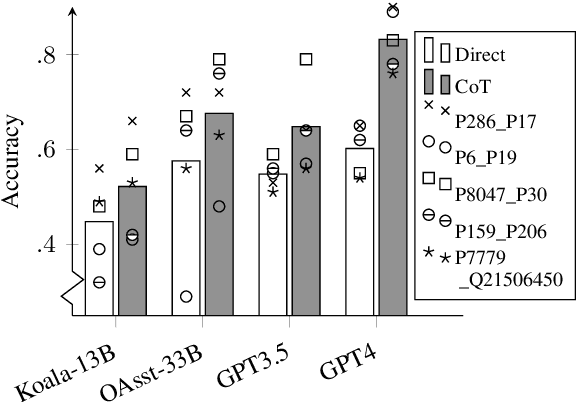
Abstract:Natural language reasoning plays an increasingly important role in improving language models' ability to solve complex language understanding tasks. An interesting use case for reasoning is the resolution of context-dependent ambiguity. But no resources exist to evaluate how well Large Language Models can use explicit reasoning to resolve ambiguity in language. We propose to use ambiguous definite descriptions for this purpose and create and publish the first benchmark dataset consisting of such phrases. Our method includes all information required to resolve the ambiguity in the prompt, which means a model does not require anything but reasoning to do well. We find this to be a challenging task for recent LLMs. Code and data available at: https://github.com/sfschouten/exploiting-ambiguity
GRAPES: Learning to Sample Graphs for Scalable Graph Neural Networks
Oct 05, 2023
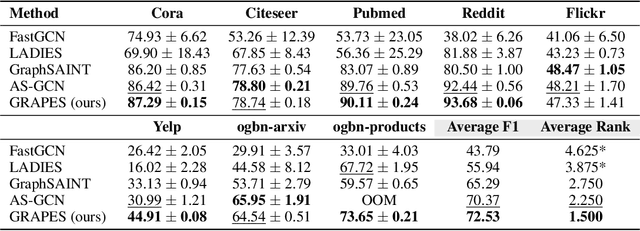
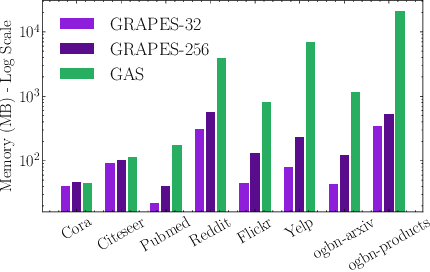

Abstract:Graph neural networks (GNNs) learn the representation of nodes in a graph by aggregating the neighborhood information in various ways. As these networks grow in depth, their receptive field grows exponentially due to the increase in neighborhood sizes, resulting in high memory costs. Graph sampling solves memory issues in GNNs by sampling a small ratio of the nodes in the graph. This way, GNNs can scale to much larger graphs. Most sampling methods focus on fixed sampling heuristics, which may not generalize to different structures or tasks. We introduce GRAPES, an adaptive graph sampling method that learns to identify sets of influential nodes for training a GNN classifier. GRAPES uses a GFlowNet to learn node sampling probabilities given the classification objectives. We evaluate GRAPES across several small- and large-scale graph benchmarks and demonstrate its effectiveness in accuracy and scalability. In contrast to existing sampling methods, GRAPES maintains high accuracy even with small sample sizes and, therefore, can scale to very large graphs. Our code is publicly available at https://github.com/dfdazac/grapes.
IntelliGraphs: Datasets for Benchmarking Knowledge Graph Generation
Jul 19, 2023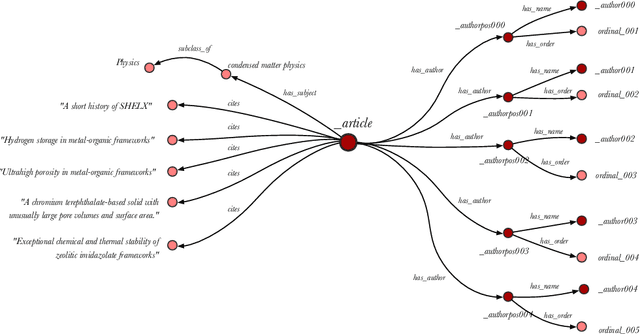

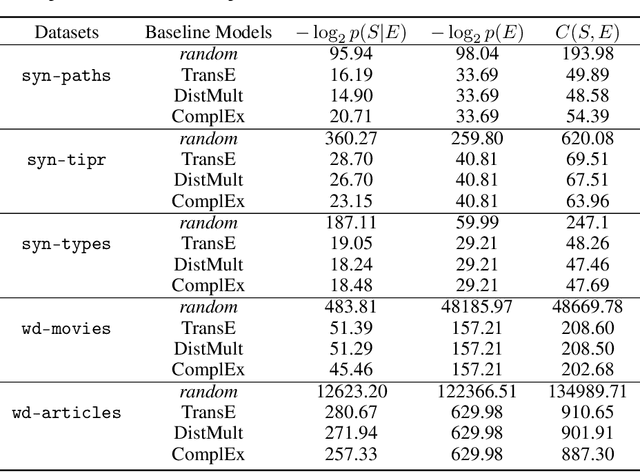
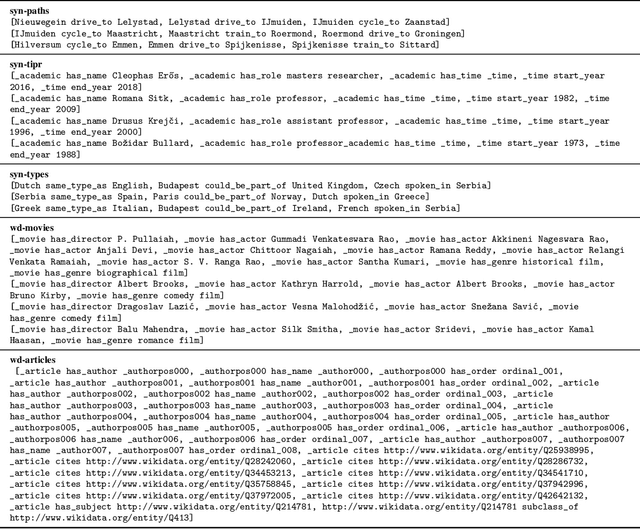
Abstract:Knowledge Graph Embedding (KGE) models are used to learn continuous representations of entities and relations. A key task in the literature is predicting missing links between entities. However, Knowledge Graphs are not just sets of links but also have semantics underlying their structure. Semantics is crucial in several downstream tasks, such as query answering or reasoning. We introduce the subgraph inference task, where a model has to generate likely and semantically valid subgraphs. We propose IntelliGraphs, a set of five new Knowledge Graph datasets. The IntelliGraphs datasets contain subgraphs with semantics expressed in logical rules for evaluating subgraph inference. We also present the dataset generator that produced the synthetic datasets. We designed four novel baseline models, which include three models based on traditional KGEs. We evaluate their expressiveness and show that these models cannot capture the semantics. We believe this benchmark will encourage the development of machine learning models that emphasize semantic understanding.
Relational Graph Convolutional Networks: A Closer Look
Jul 21, 2021
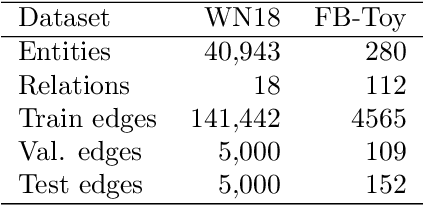
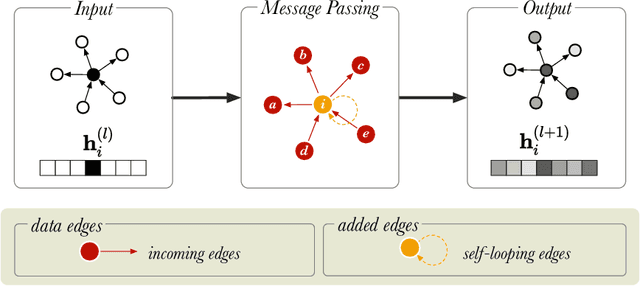
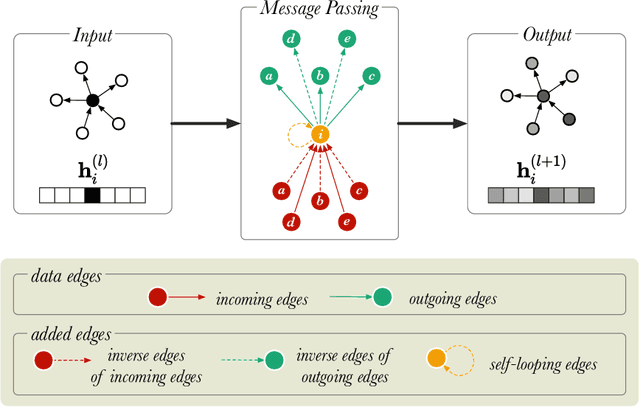
Abstract:In this paper, we describe a reproduction of the Relational Graph Convolutional Network (RGCN). Using our reproduction, we explain the intuition behind the model. Our reproduction results empirically validate the correctness of our implementations using benchmark Knowledge Graph datasets on node classification and link prediction tasks. Our explanation provides a friendly understanding of the different components of the RGCN for both users and researchers extending the RGCN approach. Furthermore, we introduce two new configurations of the RGCN that are more parameter efficient. The code and datasets are available at https://github.com/thiviyanT/torch-rgcn.
Finding Motifs in Knowledge Graphs using Compression
Apr 16, 2021
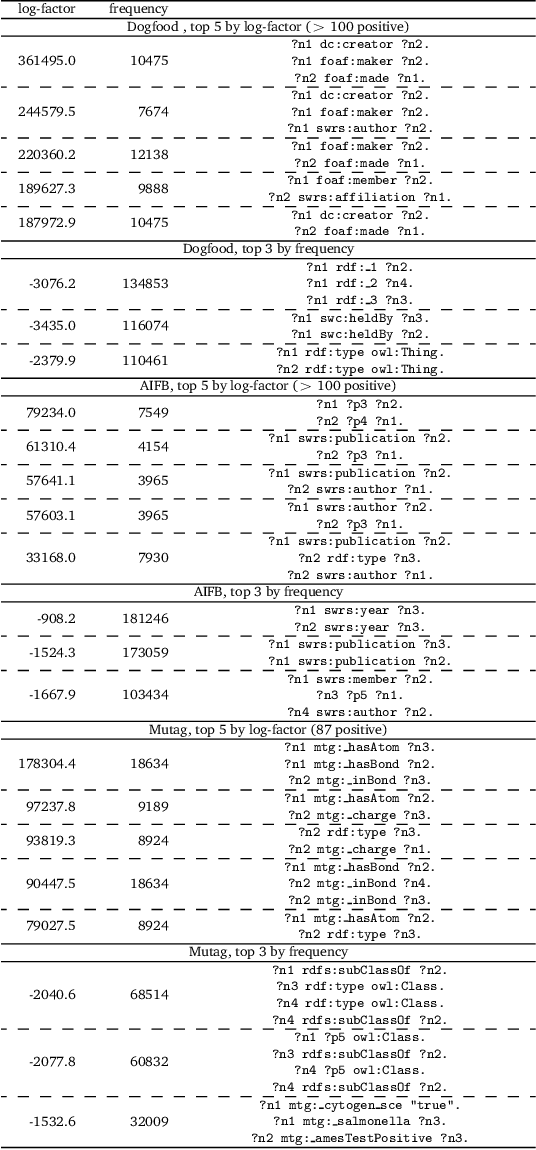
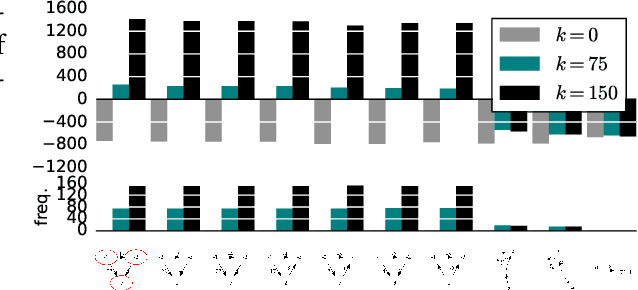
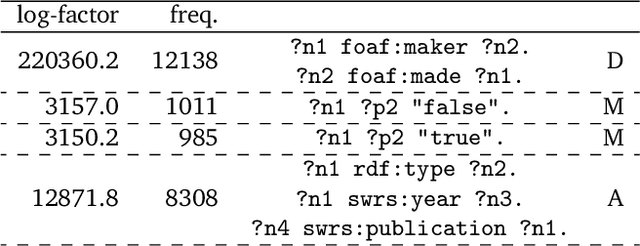
Abstract:We introduce a method to find network motifs in knowledge graphs. Network motifs are useful patterns or meaningful subunits of the graph that recur frequently. We extend the common definition of a network motif to coincide with a basic graph pattern. We introduce an approach, inspired by recent work for simple graphs, to induce these from a given knowledge graph, and show that the motifs found reflect the basic structure of the graph. Specifically, we show that in random graphs, no motifs are found, and that when we insert a motif artificially, it can be detected. Finally, we show the results of motif induction on three real-world knowledge graphs.
Uncertainty Intervals for Graph-based Spatio-Temporal Traffic Prediction
Dec 09, 2020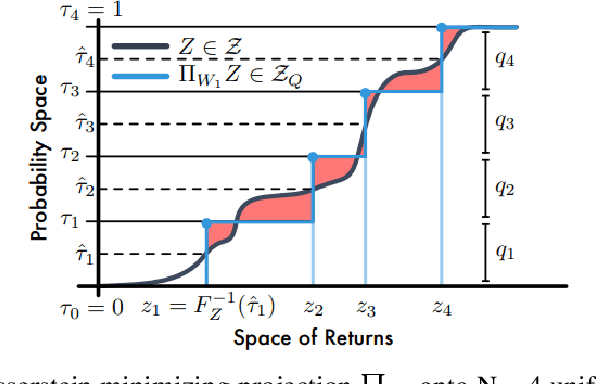

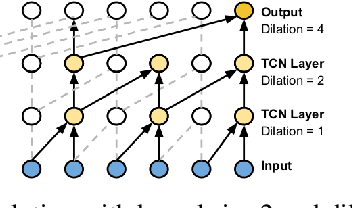
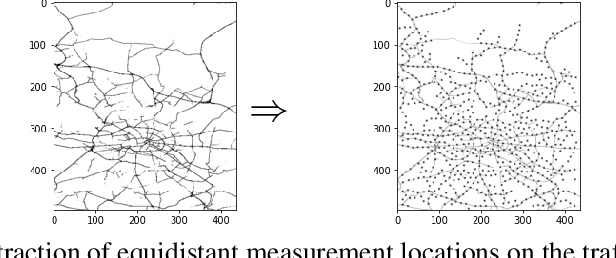
Abstract:Many traffic prediction applications rely on uncertainty estimates instead of the mean prediction. Statistical traffic prediction literature has a complete subfield devoted to uncertainty modelling, but recent deep learning traffic prediction models either lack this feature or make specific assumptions that restrict its practicality. We propose Quantile Graph Wavenet, a Spatio-Temporal neural network that is trained to estimate a density given the measurements of previous timesteps, conditioned on a quantile. Our method of density estimation is fully parameterised by our neural network and does not use a likelihood approximation internally. The quantile loss function is asymmetric and this makes it possible to model skewed densities. This approach produces uncertainty estimates without the need to sample during inference, such as in Monte Carlo Dropout, which makes our method also efficient.
A Hybrid 3DCNN and 3DC-LSTM based model for 4D Spatio-temporal fMRI data: An ABIDE Autism Classification study
Feb 14, 2020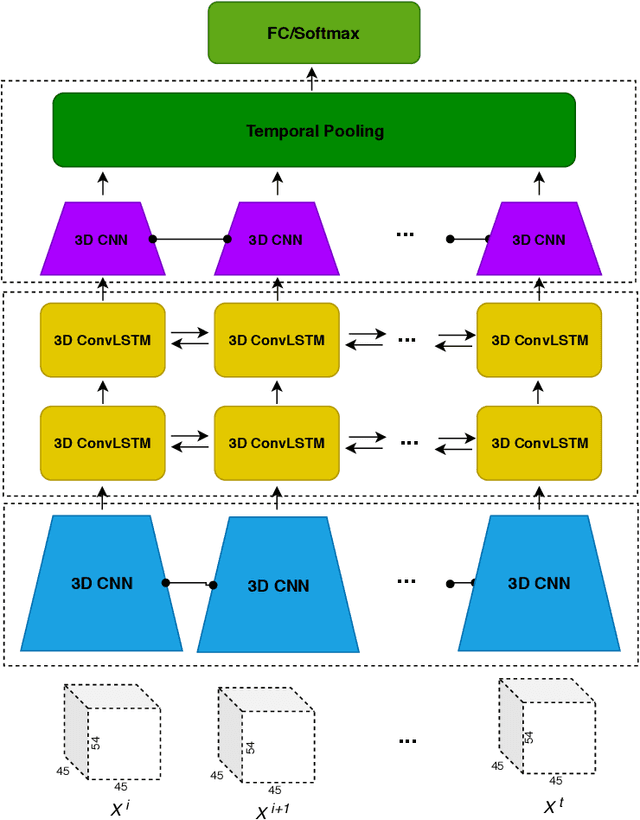
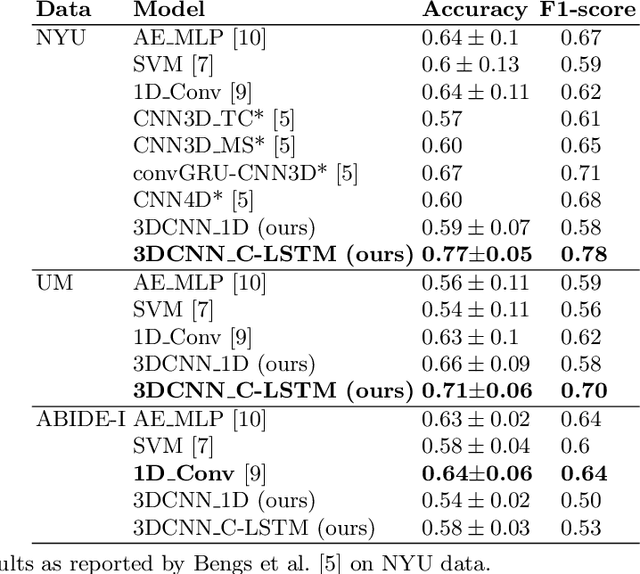
Abstract:Functional Magnetic Resonance Imaging (fMRI) captures the temporal dynamics of neural activity as a function of spatial location in the brain. Thus, fMRI scans are represented as 4-Dimensional (3-space + 1-time) tensors. And it is widely believed that the spatio-temporal patterns in fMRI manifests as behaviour and clinical symptoms. Because of the high dimensionality ($\sim$ 1 Million) of fMRI, and the added constraints of limited cardinality of data sets, extracting such patterns are challenging. A standard approach to overcome these hurdles is to reduce the dimensionality of the data by either summarizing activation over time or space at the expense of possible loss of useful information. Here, we introduce an end-to-end algorithm capable of extracting spatiotemporal features from the full 4-D data using 3-D CNNs and 3-D Convolutional LSTMs. We evaluate our proposed model on the publicly available ABIDE dataset to demonstrate the capability of our model to classify Autism Spectrum Disorder (ASD) from resting-state fMRI data. Our results show that the proposed model achieves state of the art results on single sites with F1-scores of 0.78 and 0.7 on NYU and UM sites, respectively.
* 8pages
Exploiting Temporality for Semi-Supervised Video Segmentation
Aug 29, 2019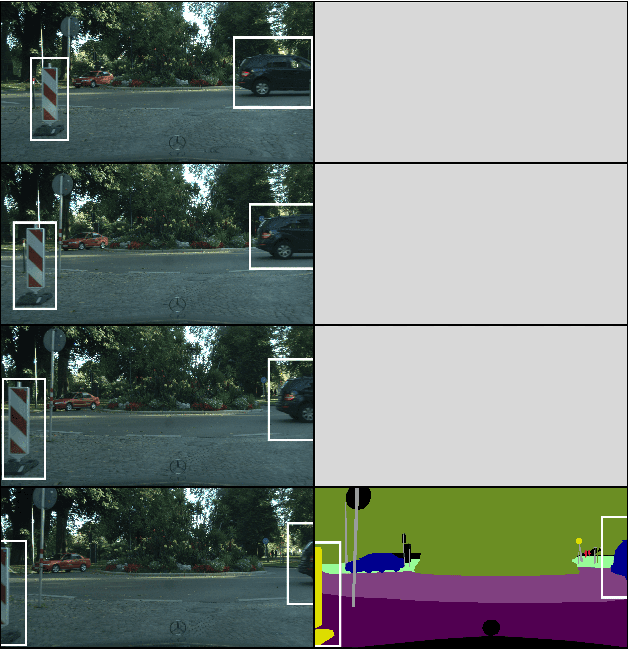
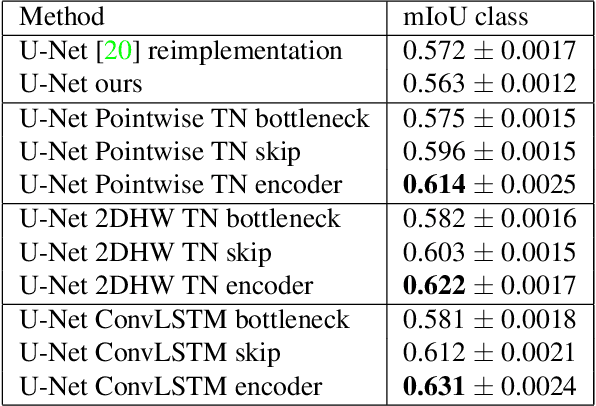
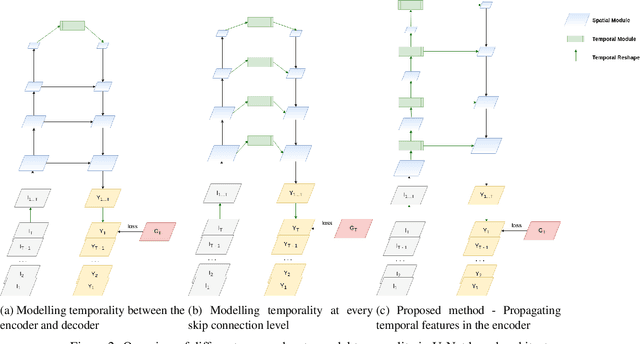
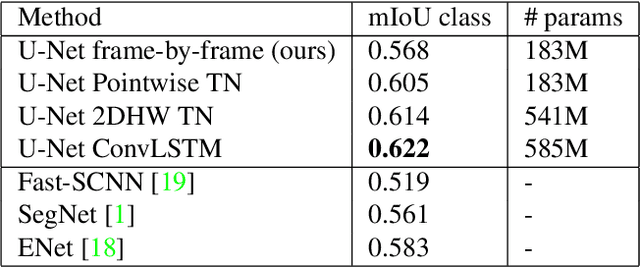
Abstract:In recent years, there has been remarkable progress in supervised image segmentation. Video segmentation is less explored, despite the temporal dimension being highly informative. Semantic labels, e.g. that cannot be accurately detected in the current frame, may be inferred by incorporating information from previous frames. However, video segmentation is challenging due to the amount of data that needs to be processed and, more importantly, the cost involved in obtaining ground truth annotations for each frame. In this paper, we tackle the issue of label scarcity by using consecutive frames of a video, where only one frame is annotated. We propose a deep, end-to-end trainable model which leverages temporal information in order to make use of easy to acquire unlabeled data. Our network architecture relies on a novel interconnection of two components: a fully convolutional network to model spatial information and temporal units that are employed at intermediate levels of the convolutional network in order to propagate information through time. The main contribution of this work is the guidance of the temporal signal through the network. We show that only placing a temporal module between the encoder and decoder is suboptimal (baseline). Our extensive experiments on the CityScapes dataset indicate that the resulting model can leverage unlabeled temporal frames and significantly outperform both the frame-by-frame image segmentation and the baseline approach.
End-to-End Learning from Complex Multigraphs with Latent Graph Convolutional Networks
Aug 14, 2019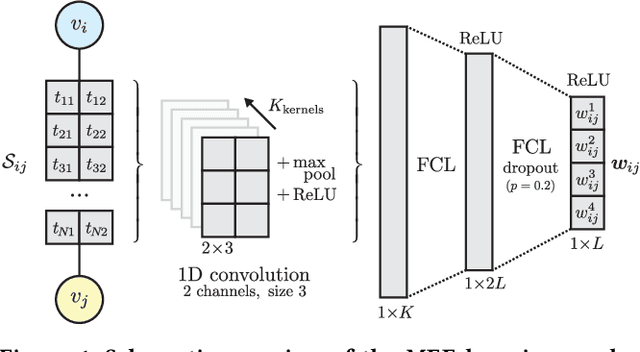

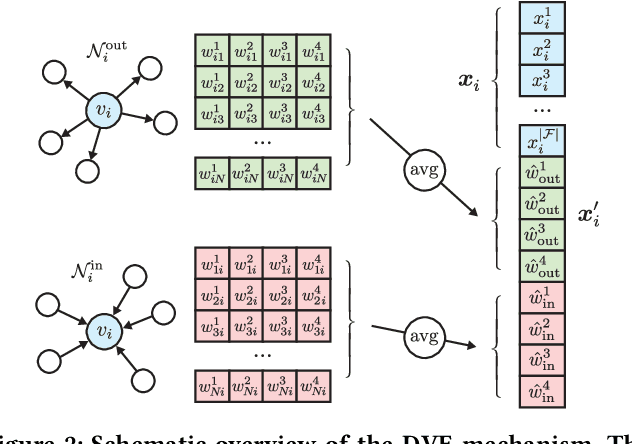
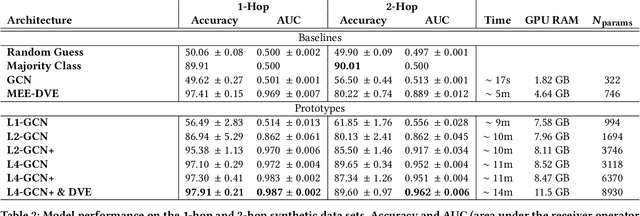
Abstract:We study the problem of end-to-end learning from complex multigraphs with potentially very large numbers of edges between two vertices, each edge labeled with rich information. Examples of such graphs include financial transactions, communication networks, or flights between airports. We propose Latent-Graph Convolutional Networks (L-GCNs), which can successfully propagate information from these edge labels to a latent adjacency tensor, after which further propagation and downstream tasks can be performed, such as node classification. We evaluate the performance of several variations of the model on two synthetic datasets simulating fraud in financial transaction networks, to ensure that the model must make use of edge labels in order to achieve good classification performance. We find that allowing for nonlinear interactions on a per-neighbor basis enhances performance significantly, while also showing promising results in an inductive setting.
 Add to Chrome
Add to Chrome Add to Firefox
Add to Firefox Add to Edge
Add to Edge